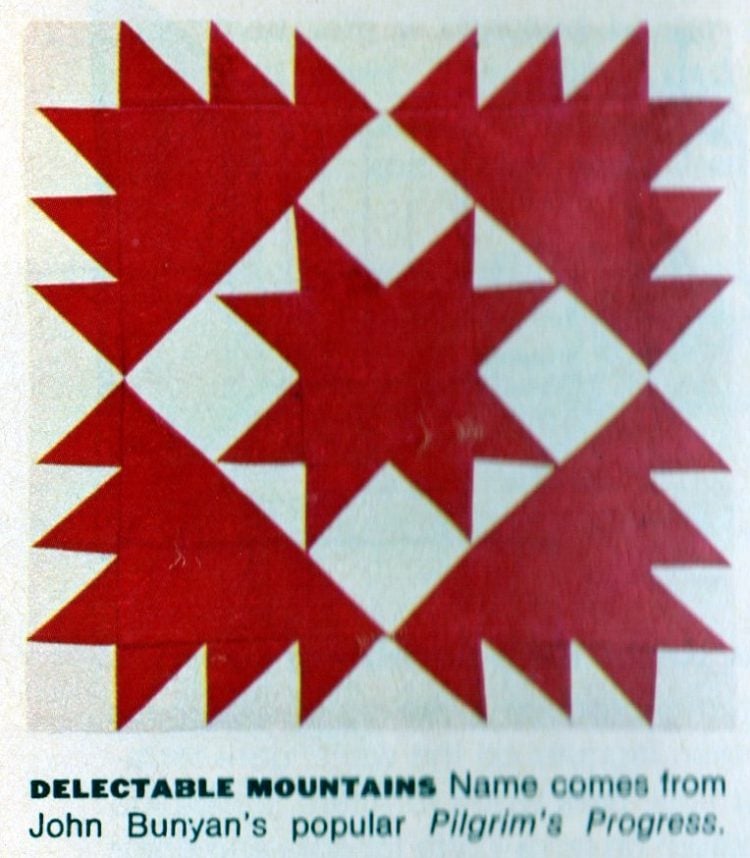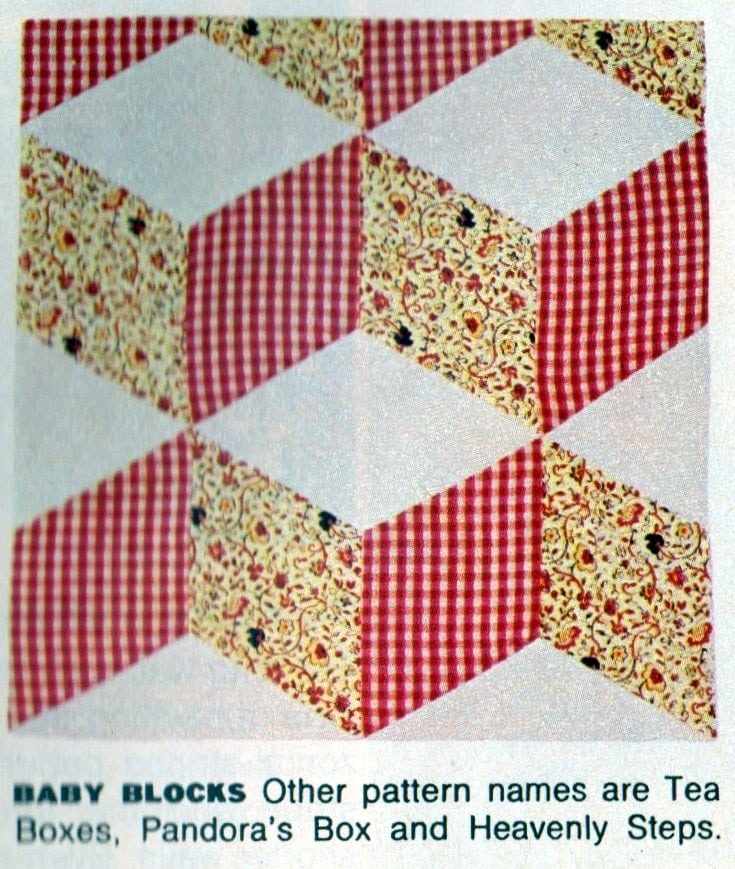Americana quilts: Piecing together the past, one stitch at a time
The history of Americana quilts stretches back to the earliest days of the United States, when settlers stitched together scraps of fabric from worn-out clothing or leftover textiles. These quilts were both practical and artistic, with patterns often reflecting family histories, regional influences and even political sentiments.

In the 19th century, patchwork quilting gained popularity as fabric became more available. Designs like the Log Cabin, Flying Geese, and Double Wedding Ring were shared among communities, with each quilt becoming a reflection of its maker’s life and environment. Some were gifts to mark milestones, while others were made as part of quilting bees, where neighbors gathered to work and socialize.
By the 20th century, quilts had grown into a form of cultural storytelling. They recorded everything from personal experiences to major historical events. During the Great Depression, quilting saw a resurgence as families reused materials to create something meaningful. Quilts became a reminder of resilience and a way to connect with others during difficult times.

Americana quilts continue to inspire, whether through traditional methods or modern interpretations. We’ve gathered a collection of photos and articles that dive into the history and artistry of these iconic quilts. Take a look to explore the patterns, stories, and heritage behind this cherished tradition.
American heritage: 12 pieced patchwork quilts you can make (1972)
Try your hand at these traditional patterns – the pride of America’s past, and adaptable for many uses today.
By Jean Todd Freeman – Woman’s Day, July 1972
One rainy afternoon when I was a child, my great-aunt Nancy Clementine opened the dark, mysterious trunk room in my grandmother’s house, brought out two carefully folded bundles and spread them out for my sister and me to see.
They were patchwork quilts, one for each of us; we had only to choose.
LOG CABIN
Variations include Straight Furrow, Courthouse Steps, and Barn-raising

BABY BLOCKS
Other pattern names are Tea Boxes, Pandora’s Box and Heavenly Steps.

BEAR’S PAW
Called Bear’s Paw (in Ohio); Duck’s-Foot-in-the-Mud (Long Island); Hand of Friendship (Philadelphia)

I can remember vividly the delicious agony of deciding between them: the large eight-pointed star in delicate shades of pink, rose, blue and green; the bolder, more exciting sunburst pieced in triangles of red and orange.
But I remember only vaguely what our great-aunt told us of their origin: how they were cut and hand-stitched and finally quilted on the wooden frame that was lowered on ropes from the rafters of my great-grandmother’s house in the Mississippi pinewoods.
A quilting frame that was raised and lowered on ropes? I have never heard of such a thing since. Nor do I know whether the patchwork was done by my great-aunt alone or whether her five sisters helped, or whether the quilts were meant to be part of Great-aunt Nancy’s dowry — she who never married.
TRIPLE IRISH CHAIN
An extremely popular pattern, sometimes in single and double.

DELECTABLE MOUNTAINS
The name comes from John Bunyan’s popular Pilgrim’s Progress

MORE: How to make some adorable lion and elephant quilted comforters (1972)
BLAZING STAR
Shaded eight-point star with four patches in each of the diamond shapes.

I do know, however, that the quilt I finally chose is called Rising Sun. The most immediate appeal of patchwork, for most of us, is its bright gaiety. The most lasting appeal is its bracing affirmation of our own history.
For it was the American woman — the Colonial dame in Boston or Philadelphia, the southern plantation lady, the pioneer wife in Kentucky or Arkansas — who took the simple craft of sewing bits of cloth together and transformed it into a true folk art.
Of course, the earliest patchwork sprang from necessity: cloth was too scarce and too expensive to waste, so every odd-shaped snippet of “calicoe” or “chints” was saved to be stitched together to make a larger piece of material in a “crazy-patch” fashion.
EVENING STAR
Its variations include Brunswick Star, Rolling Star and Chained Star.

CROWN OF THORNS
A combination of star and wreath; also called Georgetown Circle.

PINEAPPLE
Often done in prints. Variations are Washington Pavement and Maltese Cross.

ALSO SEE: Bandana baby clothes: 3 easy outfits you can make with real retro style
But it was not long before women, craving beauty and order, began to plan their patchwork. The haphazard crazy-patch was succeeded by Hit and Miss, in which each piece was trimmed to the same size and shape, though still not sewed together in a deliberate order; then came Roman Stripe, formed by alternating dark and light colors.
From this first attempt at patterned patchwork, our inventive ancestors went on to create more elaborate designs — stars, sunbursts, tulips and roses; wreaths, pine trees, and exciting geometric arrangements of truly incredible complexity.
It was a matter of pride among these women never to copy exactly the pattern of a friend or neighbor, and so from each basic motif came countless variations.
Thus from the famous LeMoyne Star (called Lemon Star by plain folk unused to the French language) developed the Piney (peony), Kansas Sunflower, Rising Sun, Bouquet of Tulips, California Star and more.
LeMOYNE STAR
From the coat of arms of New Orleans’ founder, Jean Baptiste LeMoyne.

HOSANNA or THE PALM
On Jesus’ entry into Jerusalem people saluted him with palms.

UNION STAR
A simple five-pointed star; it has fewer variations than the eight-pointed star.

MORE TO SEE: 51 beautiful prize-winning vintage quilts from the ’70s for some creative inspiration
Books about Americana quilting
- Annie's (Author)
- English (Publication Language)
- 48 Pages - 09/05/2023 (Publication Date) - Annies (Publisher)
- Explore 12 Diverse Projects: Quilting, Sewing, Embroidery & More
- Publication Date: September 25, 2020
- Price: $25.95
- Fifteen patchwork pattern designs, featuring classic blocks
- The perfect start to any project
- These are a great way to add extra design to whatever project you want to add it to
- That Patchwork Place (Author)
- English (Publication Language)
- 96 Pages - 05/10/2011 (Publication Date) - That Patchwork Place (Publisher)
- Used Book in Good Condition
- Hardcover Book
- Fox, Sandi (Author)
- Griffin, Patience (Author)
- English (Publication Language)
- 330 Pages - 04/01/2018 (Publication Date) - Kilts & Quilts Publishing (Publisher)
























